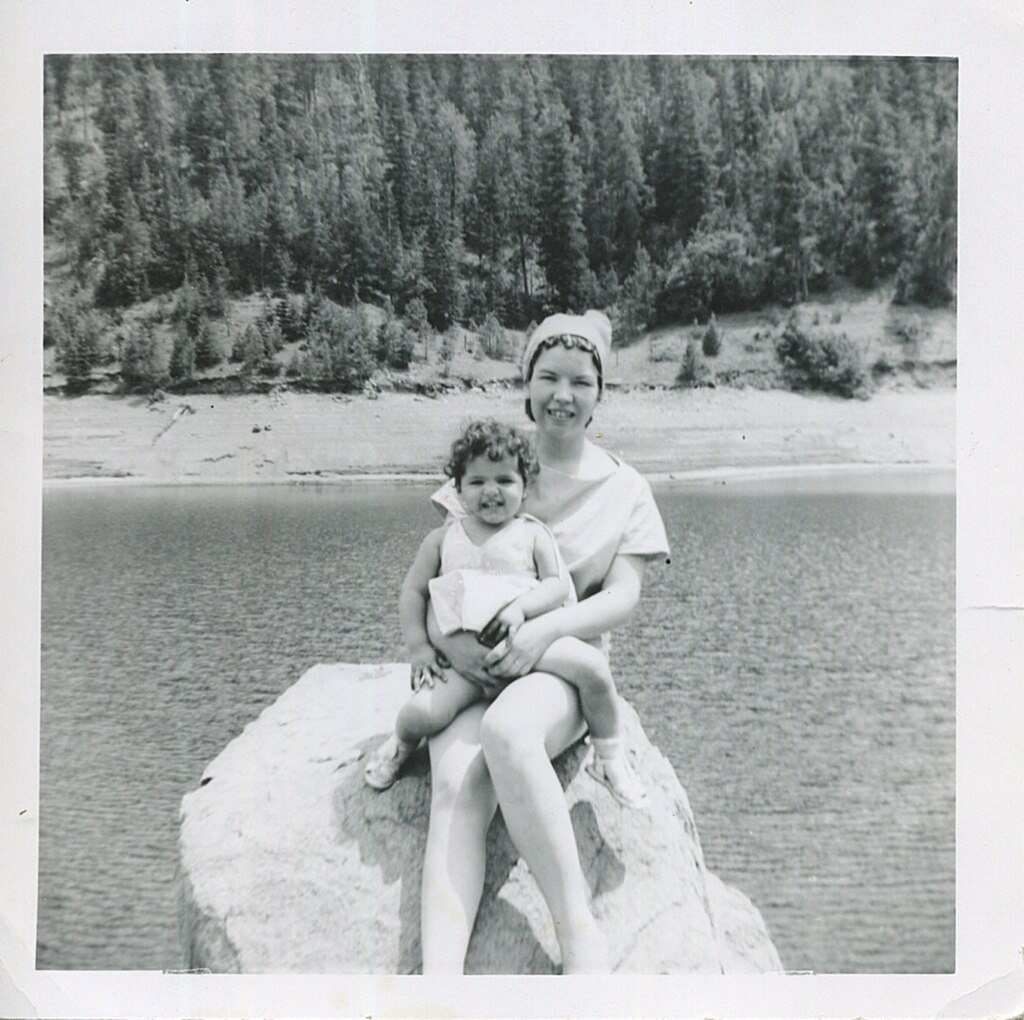Most new parents will tell you: although welcoming a little one is a challenge, it is a joy and a blessing. But when Rebecca and Paul Callahan welcomed their daughter Matilda Rose into the world in 2010, their joy quickly faded. Rebecca and Paul Callahan are a happy couple from Wigan, Greater Manchester in the United Kingdom. The two loved each other very much and had decided to try for a baby. However, Rebecca’s pregnancy did not go smoothly, and due to excess fluid around the fetus, doctors decided to induce labor.
When the beautiful baby girl was finally born, doctors noticed a large, unusual wine-colored spot spanning half of her face and body. Despite these problems, Rebecca and Paul were delighted to finally see their baby girl. They already loved her so much and couldn’t wait to bring her home to continue their family life. Despite the large stain, no one had any idea that anything unusual was wrong with little Matilda until about half an hour later. At first, doctors told the parents it was just a birthmark. Confident young women like dancer Cassandra Naud have proven time and time again that birthmarks are beautiful, but Matilda’s mark would turn out to be a sign of something more difficult and serious.
The first problems arose when the nurses tried to feed Matilda. That’s when the child stopped breathing, and for the Callaghans, it was the first sign that something was wrong. Although doctors thought the mark was a simple bruise, they would soon discover the terrifying truth and realize their huge mistake. Soon after, Matilda became so ill that she was taken to another hospital to be monitored. There, they ended up performing emergency surgery to remove a pouch in his throat that was causing him problems eating. In a few days, the parents’ happiness had turned into worry and sadness. They didn’t know if they would ever see their daughter alive again. “We couldn’t travel with her because she was very ill. As we watched her being taken away, we didn’t know if we would see her again. We were very excited about the arrival of our baby and now we didn’t know if we would ever see him alive again,” the father recalls. And unfortunately, they were about to have more bad news.
Two weeks after giving birth, doctors learned that the huge spot was not a simple hematoma, but a symptom of Sturge-Weber syndrome, a very rare neurological skin disease. This disease appears in babies at birth and is characterized by seizures, paralysis, developmental delay and learning difficulties. Doctors now understand that the spot is caused by blood vessels under the skin. Additionally, they learned that Matilda had two holes in her heart. From the moment she was born, Matilda was a real fighter. Even though there was a good chance she wouldn’t survive, she survived the surgery and has been fighting ever since. His parents call him their little miracle. She also began laser treatment to remove her unusual birthmark. The treatment prevents the stain from growing, but it can take up to 16 years for it to disappear. She has to go every two months and her face seems covered in moles after each session. These are bruises caused by the laser. She receives treatment every two months and the laser makes them redder and more intense. Then they gradually disappear,” explains Paul.
“People think we’re bad parents, like we made Matilda look like she does. » Despite regular painful laser treatments, Matilda is a happy little girl. Many people can’t help but look at his birthmark every day. The family has to put up with the stares, the insults and even the teasing. Strangers went so far as to ask Paul and Rebecca if they had left their daughter too close to a radiator. This deeply saddens parents. “They only see what is in front of them and jump to conclusions that are hurtful. I wish they could see beyond that palm size. » Birthmark is not just a cosmetic problem as it also affects the brain, eyes and gums. The illness has left Matilda almost blind and she is unable to walk on her own. However, thanks to a special walker, she was able to take a few steps on her own.
Matilda’s whole life has been a struggle, but despite this, she always has a smile on her face and has even started to say a few words. Her father says she is a stubborn child. Either she does it her way or she doesn’t. “We are incredibly proud of her,” says Paul. “She is incredible, and we live each day as a richness. » Her parents are doing everything they can to raise awareness about their daughter’s illness. Together they work to give him the best life possible and celebrate every day. As soon as their daughter became little, Paul began using the Internet to find ways to make little Matilda’s life easier. And in 2016, they decided to make the necessary changes to their house. It would have needed a real renovation. They had already heard about sensory and wet rooms, and now it was time to make it a reality, as they were sure it would make Matilda’s life much more pleasant.
A sensory room is simply a special room designed to develop a person’s senses, usually through lighting, music and objects. It can be used as therapy for children with limited communication skills. A wet room, on the other hand, is a fully waterproof or flush toilet with a shower area on the same level as the rest of the floor. As you might guess, neither is cheap. And in addition to the sensory room and powder room, Matilda’s parents also spent thousands of dollars expanding the upper level of their home. They also installed a $19,000 Stiltz Trio home elevator to accommodate Matilda’s wheelchair. Since Paul is a builder, he did most of the work and they paid for the renovations with their savings. They also received help from Wigan City Council. The renovation project, which lasted 18 months, required a lot of energy and time. On the one hand, they wanted to find an elevator that was different from the stereotypical elevator for disabled people. They didn’t want a bulky model that took up a lot of space. Since Matilda has multiple disabilities, they didn’t want a device that would further highlight this. And they were looking for something that could be used by everyone. And since Rebecca’s grandfather was an amputee, they wanted an elevator that would accommodate his needs during his visit.
But despite their best efforts, they couldn’t find a disabled elevator they liked. During another Internet search session, they found a perfect option: an elevator with a free-standing structure that operates using a built-in electric motor that plugs directly into a household electrical outlet. This meant they could install the elevator almost anywhere in the house. The couple chose to install it in the kitchen to make it the center of attention. As part of Paul’s plans to make the elevator even more striking and better match the kitchen decor, he opted for a striking black finish and diamond plate flooring. They couldn’t be happier with this purchase. It made Matilda’s life so much easier. “Matilda can’t talk or walk, so when she smiles, she tells us we’re doing something right,” her parents say. Paul and Rebecca are also very aware that at some point they will probably use the elevator themselves. “When we get older, we don’t want to move into a bungalow, so the elevator will also benefit us in old age,” says Paul. “Moving costs a lot of money, more than buying an elevator. And the elevator allows us to stay in the house and continue enjoying our life without any interruption. »
Three years later, the family also set up a crowdfunding page through which they sought to raise money for a new wheelchair. According to the page, Matilda’s grandfather had recently passed away and they had created it in his memory to help their 9-year-old granddaughter. She had outgrown her old wheelchair and needed a new one. As stated on the page, Matilda has many problems. She doesn’t walk or talk, but still manages to cause chaos and make people smile.
Source link: The doctor thought she just had a bruise. Then he realizes the terrifying truth







